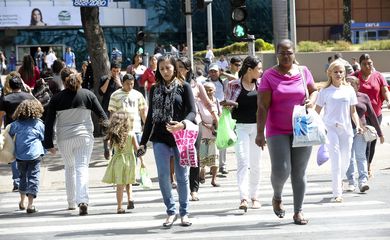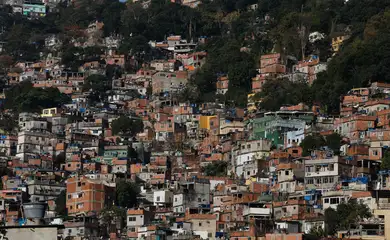Nearly 16.4 million people live in favelas across Brazil

Brazil has 16.390 million people living in favelas countrywide. The amount represents 8.1 percent of the national population (203M)—in other words, eight out of every 100 people live in these areas.

The data can be found in a supplement to the 2022 census released Friday (Nov. 8) by statistics bureau IBGE, and show there are 12,348 favelas across 656 municipalities throughout Brazil.
The researchers consider favelas to be places with characteristics such as legal insecurity of tenure; total or partial absence of public services; poor urban planning standards; and the occupation of areas with environmental restrictions or risks.
Distribution
The study reported that 43.4 percent of favela dwellers are in the Southeast—or7.1 million. The Northeast has 28.3 percent (4.6M); the North, 20 percent (3.3M); the South, 5.9 percent (968,000); and the Central-West, 2.4 percent (392,000).
The state of São Paulo has the largest population of favela residents—3.6 million—followed by Rio de Janeiro (2.1M) and Pará (1.5M). The three states together account for 44.7 percent of Brazil's total favela inhabitants. The largest favela is Rocinha, in Rio de Janeiro, with 72,021 residents.
An urban phenomenon
The census identified 26 major urban concentrations in the country—a kind of metropolitan region with more than 750 thousand residents. A total of 83.6 million people lived there. Of these, 13.6 million lived in favelas—16.2 percent, double the proportion for the whole country (8.1%).
The survey also points out that residents of the 26 major urban concentrations accounted for 41.2 percent of the total Brazilian population, while favela dwellers in these specific regions made up 82.6 percent of the total number of residents in favelas throughout Brazil.
According to analyst Letícia Giannella, the comparison demonstrates that favelas are a distinctly urban phenomenon. “It’s an indicator that shows the concentration of these areas and these groups in the most urbanized regions,” she noted.
Dê sua opinião sobre a qualidade do conteúdo que você acessou.
Escolha sua manifestação em apenas um clique.
Você será direcionado(a) para o sistema Fala.BR, mas é com a EBC que estará dialogando. O Fala.BR é uma plataforma de comunicação da sociedade com a administração pública, por meio das Ouvidorias.
Sua opinião ajuda a EBC a melhorar os serviços e conteúdos ofertados ao cidadão. Por isso, não se esqueça de incluir na sua mensagem o link do conteúdo alvo de sua manifestação.
Clique aqui para mais informações sobre a Ouvidoria da EBC.











